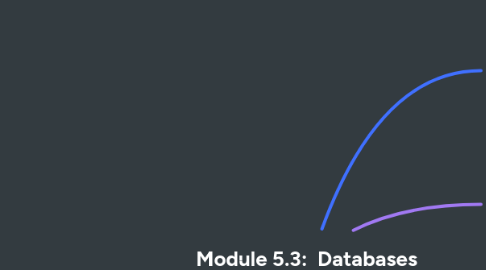
1. SQL
1.1. Amazon Relational Database Service (RDS) (SQL)
1.1.1. Amazon Relational Database Service (Amazon RDS) is a service that enables you to run relational databases in the AWS Cloud.
1.1.2. Amazon RDS database engines
1.1.2.1. Amazon Aurora
1.1.2.1.1. Amazon Aurora is an enterprise-class relational database.
1.1.2.1.2. It is compatible with MySQL and PostgreSQL relational databases.
1.1.2.1.3. It is up to five times faster than standard MySQL databases and up to three times faster than standard PostgreSQL databases.
1.1.2.1.4. It replicates six copies of your data across three Availability Zones and continuously backs up your data to Amazon S3.
1.1.2.2. PostgreSQL
1.1.2.3. MySQL
1.1.2.4. MariaDB
1.1.2.5. Oracle Database
1.1.2.6. Microsoft SQL Server
2. NoSQL
2.1. Amazon DynamoDB (NoSQL)
2.1.1. Amazon DynamoDB is a KEY-VALUE database service.
2.1.2. It delivers single-digit millisecond performance at any scale.
2.1.3. Serverless
2.1.3.1. DynamoDB is serverless, which means that you do not have to provision, patch, or manage servers.
2.1.4. Autoscaling
2.1.4.1. As the size of your database shrinks or grows, DynamoDB automatically scales to adjust for changes in capacity while maintaining consistent performance.
2.1.5. Amazon DynamoDB Accelerator (DAX)
2.1.5.1. Amazon DynamoDB Accelerator (DAX) is an in-memory cache for DynamoDB.
2.2. Amazon DocumentDB is a DOCUMENT database service that supports MongoDB workloads.
2.2.1. (MongoDB is a document database program.)
2.3. Amazon Neptune is a GRAPH database service.
2.3.1. highly connected datasets, such as recommendation engines, fraud detection, and knowledge graphs.
3. Analytics
3.1. Amazon Redshift (OLAP)
3.1.1. Amazon Redshift is a data warehousing service that you can use for BIG DATA analytics.
3.1.2. It offers the ability to collect data from many sources and helps you to understand relationships and trends across your data.
4. Additional database services
4.1. Amazon Quantum Ledger Database (Amazon QLDB) is a ledger database service.
4.1.1. Maintain an immutable, cryptographically verifiable log of data changes
4.2. Amazon Managed Blockchain
4.2.1. Is a service that you can use to create and manage blockchain networks with open-source frameworks.
4.3. Amazon ElastiCache
4.3.1. Is a service that adds caching layers on top of your databases to help improve the read times of common requests.
